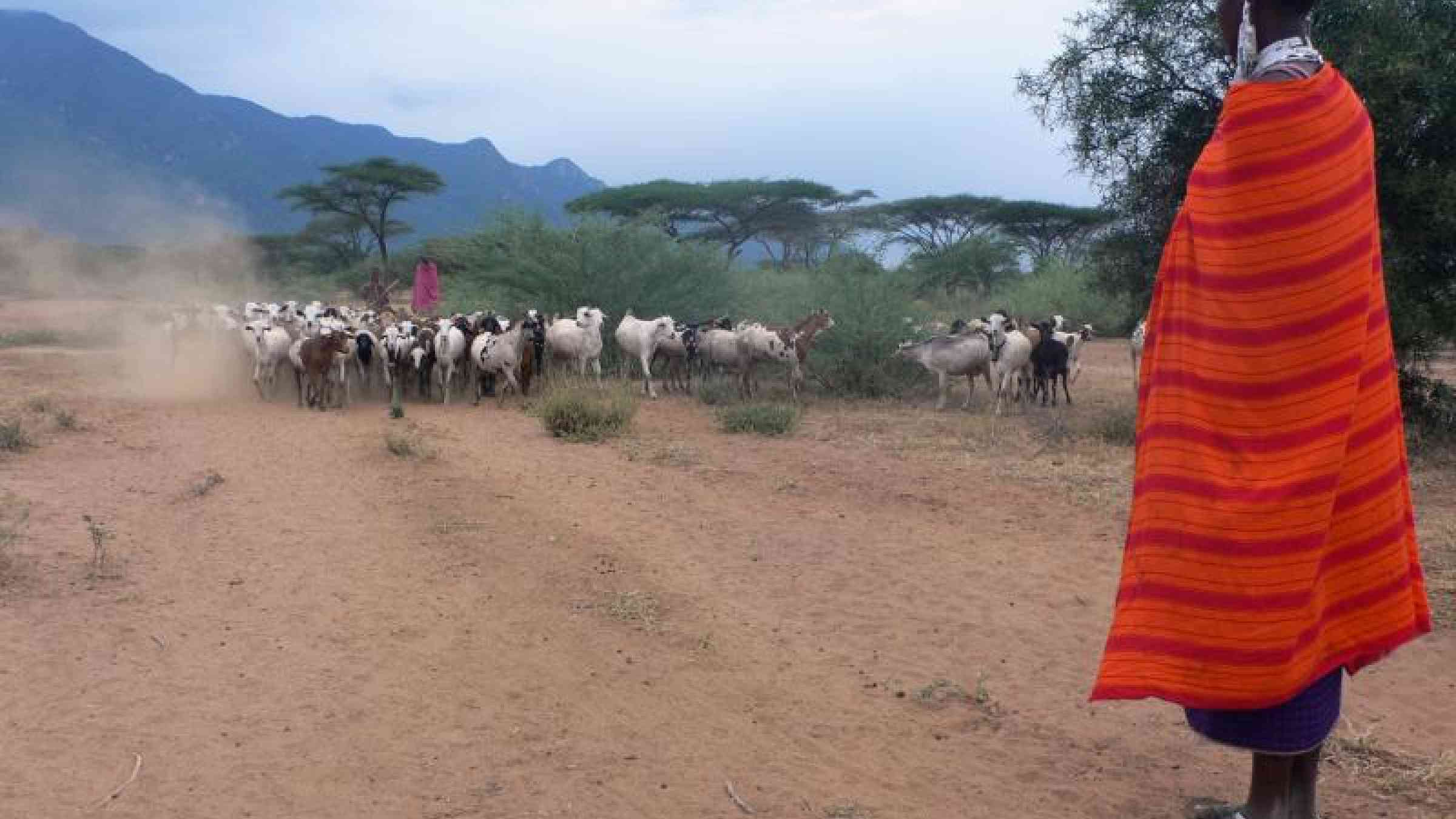
Flowing in shades of green and brown to the horizon from the curves of Kenya’s largest river as it approaches the sea, the Tana Delta is a paradise for wildlife.
Home to thousands of species of birds, mammals and freshwater fish, herds of elephant, buffalo, zebra and a variety of other wildlife that roam between Tsavo East National Park and the north-eastern rangelands, the delta has also long been home to generations of herders and farmers who depend on its rich soils to nourish their crops and livestock.
It should be an idyllic existence. But population growth and climate change are putting pressure on the delta’s 120,000 residents, sparking inter-ethnic conflict and fierce competition within and between communities for access to an ecosystem already stretched beyond its limits.
Communities bear the cost of degradation
Caught between deforestation, increasing drought and nomadic herders desperate to feed their cattle, villages like Dide Daride are bearing the brunt of the delta’s advancing degradation.
“When I was younger, we had a full month’s rain and the pastoralists moved away. Now it lasts a week and everyone leaves their cattle here,” says 28-year-old Elema. “The villagers collect dry wood, but the loggers take living trees. And where there are no trees, the sudden rain sweeps everything away.”
Women are particularly impacted: “It’s worse for us. We walk eight kilometres to fetch water for the cows or sell milk, with no guarantee of customers,” says Mariam, Elema’s elderly mother.
Dide Daride elder Omar lost 45 cattle over the last dry season due to a lack of pasture. “Before, the delta was full of water, and there was enough pasture. But now the delta is beginning to dry,” he says. “Sometimes there is no grass on the ground, the area is completely dry.”
“We don’t have any bank, all we have is these cattle—so if we lose them, we have nothing.”
It’s a familiar story here and with no coherent planning to manage land use there were regular conflicts, reaching a low point in 2012 when 286 people died in clashes between farmers and pastoralists, according to Omar.
“There have been clashes all over. Somehow, we have slowly drifted from environmental crisis to a disaster.” - Godhana Dhadho, Tana River County Governor
Shared decisions defuse tensions
But by bringing communities and commercial interests together to decide on sustainable land use, The Restoration Initiative, a US$250-million Global Environment Facility-backed global programme implemented in Kenya by the UN Environment Programme, is working to defuse local tensions and rebalance the delta’s ecosystem.
Building on the Tana Delta Sustainable Land Use Plan created by villagers and local authorities with Nature Kenya, the project is developing value chains and motivating private sector investment to secure local livelihoods, while advising on policies and strategies to sustainably manage the delta.
Already, community participation in land-use decisions is having an impact, with Nature Kenya having helped more than 100 villages to develop land-use plans and realize better management of natural resources, advocate for land restoration and conservation, and influence local government policy on land use.
“We have agreed who will use which area of land and how to better manage it,” says Omar. “Now we have the knowledge to create awareness and bring people together. Now we can stay in peace.”
The Restoration Initiative unites 10 Asian and African countries – Cameroon, Pakistan, Myanmar, Tanzania, Central African Republic, China, Sao Tome & Principe, Guinea Bissau, DRC, and Kenya, with three GEF Agencies – FAO, IUCN and UNEP – to overcome existing barriers to restoration and restore degraded landscapes at scale. Under the Initiative, UNEP and Nature Kenya are supporting Tana Delta communities to take a leading role in the sustainable management of their environment and natural resources. By 2023, the project aims to see over 130,000 ha under sustainable livestock, fish and crop management, with an additional 10,000 ha under restoration, and 95,000 ha reserved for indigenous community conservation areas.